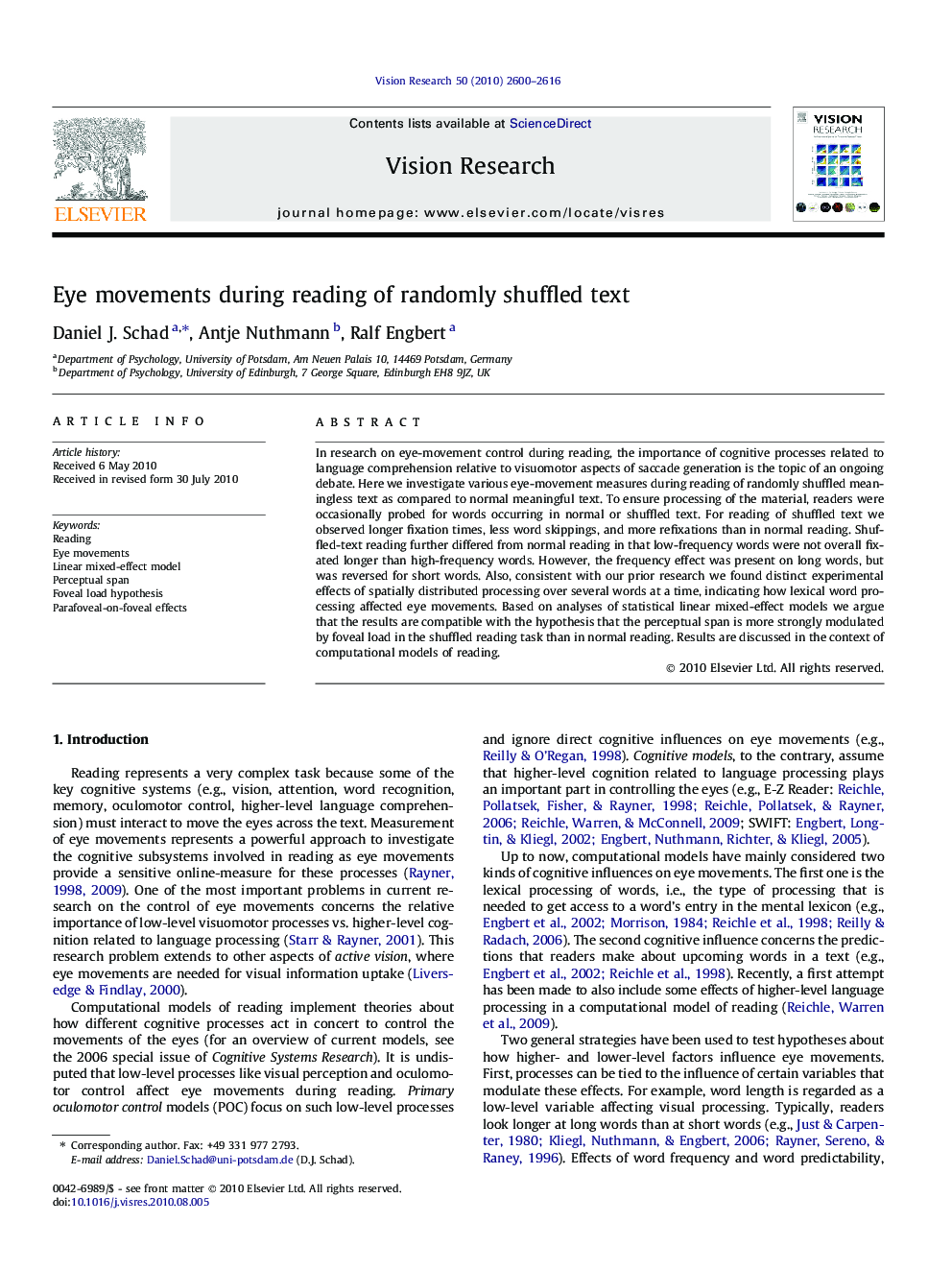| Article ID | Journal | Published Year | Pages | File Type |
|---|---|---|---|---|
| 6203828 | Vision Research | 2010 | 17 Pages |
In research on eye-movement control during reading, the importance of cognitive processes related to language comprehension relative to visuomotor aspects of saccade generation is the topic of an ongoing debate. Here we investigate various eye-movement measures during reading of randomly shuffled meaningless text as compared to normal meaningful text. To ensure processing of the material, readers were occasionally probed for words occurring in normal or shuffled text. For reading of shuffled text we observed longer fixation times, less word skippings, and more refixations than in normal reading. Shuffled-text reading further differed from normal reading in that low-frequency words were not overall fixated longer than high-frequency words. However, the frequency effect was present on long words, but was reversed for short words. Also, consistent with our prior research we found distinct experimental effects of spatially distributed processing over several words at a time, indicating how lexical word processing affected eye movements. Based on analyses of statistical linear mixed-effect models we argue that the results are compatible with the hypothesis that the perceptual span is more strongly modulated by foveal load in the shuffled reading task than in normal reading. Results are discussed in the context of computational models of reading.
Research highlights⺠Random shuffling of words in text removes predictability of individual words. ⺠Eye movements reveal differences in reading of shuffled and normal text. ⺠Standard word-frequency effect absent and sometimes reversed in reading shuffled text. ⺠Dynamical modulation of perceptual span explains pattern of word-frequency effects. ⺠Word processing in reading shuffled text is spatially distributed.
